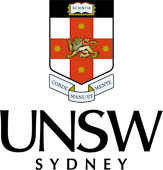In the last ten years the effects of disease on natural marine communities have become increasingly apparent, with organisms as diverse as seagrasses, seals and corals suffering from major disease-related die-offs. In a number of these instances human impacts via pollution or climate change are thought to have played a major role in the impact of these diseases. Recent evidence indicates that "bleaching" of the red seaweed Delisea pulchra is due to a bacterial disease. Seaweeds are the “trees” of temperate rocky reefs, creating the biological habitat in which many other marine organisms flourish. In the same way that the potential loss of coral reefs from climate change would have dramatic, system-wide effects in tropical waters, the loss of kelp from temperate shores would be devastating to the functioning and biodiversity of these systems. Kelps are diminishing in abundance in Tasmania, and have also disappeared from urban areas around Sydney and Adelaide, suggesting that these plants are being challenged by human impacts from cities as well as global warming. As part of the Integrated Marine Observing System (IMOS), we are combining cutting-edge robotics technology with field ecology and molecular microbiology to gain insights into the distribution and condition of kelp communities around Australia in order to understand how they are responding to environmental change. We are also investigating broadly the interplay between bacterial virulence and environmental factors such as temperature, light and nutrients, and natural bacterial inhibitors to understand the epidemiology and impact of disease on the ecology of kelps and other seaweeds.
Experience
-
–presentDirector of SIMS and Co-director of CMB, UNSW Australia
- Article Feed
- Joined


